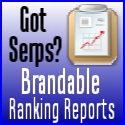 Look how old this is!
Look how old this is! I post at SearchCommander.com now, and this post was published 17 years 4 months 5 days ago. This industry changes FAST, so blindly following the advice here *may not* be a good idea! If you're at all unsure, feel free to hit me up on Twitter and ask.
In Fridays post, I pointed out that when Yahoo sells out, they are calling it a “partnership program”. However, when Google sells out, what do they call it?
Google is even sticking extra search tools right in the ad itself, while also removing the “sponsored links” text that we’ve all grown accustomed to.
Thanks to Rand Fishkin for pointing this out to me, but Rand, where’s your outrage?

Now yes the Google ad is in a different font, and it has four different links at the bottom, so it doesn’t blend seamlessly, but it still looks just like a Google One Box to me…I’m sorry, but if this is a paid advertisement, I think it should be marked as one. I don’t begrudge Google their right to make money, but if we are supposed to trust the search results, shouldn’t we know the difference between an ad and a regular search?
Sure it can be argued that this ad is still a useful tool, and for someone looking for low air fares on a given date it’s quite convenient. Maybe the fact that it’s paid even makes no difference to the end user, but who makes that determination?
Is there a “department of creative revenue generation” at Google that reviews these types ad and decides what’s deceptive and what’s not?
Since it looks just like a Google one box and the addition of these extra search boxes with travel dates makes this appear a part of the search tool, then couldn’t this be reported to Matt Cutts for nondisclosure of paid links?
Yes, I know a Google SERP isn’t the same as a static webpage passing PR, but I thought Google wanted to know about paid links because if unfairly applied, they can have a direct result on organic search rankings, giving big spenders an advantage. Therefore, isn’t this directly related?
Frankly, as an Internet marketer, I would really like to know the specific details of each of these programs on both Google and Yahoo, concerning:
- What phrases are available, and what phrases are not?
- What are the the partnership guidelines?
- What are the costs of these type of partnerships?
From an advertisers standpoint, this is a great thing, and I have several clients that would likely take advantage. How much do we have to spend to make our ads not look like ads any more? But that’s besides the point… I want full disclosure!
If I wanted to take out an ad in the newspaper that looks just like a news story, I can’t do that. Newspapers will not permit me to use the same headline type face, and have the ad copy be in the same font and column width as their news stories are. I am also forced to have an annotation above my “story” that says *advertisement*.
I’ve always assumed that the search engine results pages were supposed to be “the facts” as their algorithm may determine them, and we’ve all gotten used to seeing ads in defined areas of the screen that are easily recognized. Clearly, the lack of regulation in this area is resulting in some ethical quandaries.
Google is asking us to report paid links, while at the same time, increasing their own revenue by not disclosing that their own search results are in some cases a revenue generator? Doesn’t this seem hypocritical and an unfair trade practice?
Maybe there’s a lower fare to be had from someone other than those five advertisers paying for placement? If that can only be found by scrolling down further into the page or further refining your search, the end user would never be able to determine that from this ad placement.
I speculated in this post that the integration of video, images and other Google properties into the regular search results may be an attempt to keep users on Googles revenue generating pages longer, and I think this development backs up my theory.
This shift to unmarked advertising seems to be taking it even further, as they are trying to generate revenue directly from what appear to the visitors as regular search results or search tools.
In my SEOmoz vs. Shoemoney post, where I mentioned their differing stances on full disclosure, I said this:
Jeremy’s point was that being a savvy media consumer, you should always assume that there is something coming back to the author on the backend. This should apply whether it’s something as innocent as a backlink in a story or something as obvious as a banner on the side of the page.
Rand’s point was that a blog could quickly lose credibility if it was discovered “after the fact” that a particular review or recommendation was the result of an affiliate agreement or even a direct payment.
Isn’t this the same thing? Score 10 points for Shoemoney here, wouldn’t you say?
In efforts to sum up succinctly the key factors of search engine visibility, I used to say this – “Assuming your site is architecturally and structurally sound, with no crawlability issues, then after the SEO Basics it all comes down to regular addition of high quality relevant content, and development of targeted inbound links to from relevant sites”
How long before that’s no longer true? I think we’d better start taking Jeremy’s advice, and assuming that there could always be something coming back on the back end, whether it’s to a blog author or to a search engine.




















It’s not an ad, it’s just a Google OneBox. Google links to six competing companies, so no reasonable person could think it’s an ad.
http://www.google.com/help/features.html
http://battellemedia.com/archives/001964.php
So you believe it’s NOT any sort of paid sponsorship? Fair enough, and I agree that it does not appear to be a paid listing…
However, on this post on my blog Friday, Rand Fishkin commented this –
I’d have to call Rand a sane and rational person, but perhaps he’s wrong?
On John Batelle’s Blog you reference above, someone commented – “Does anyone know if this is paid or not?” but nobody answered…
So? Is this a paid placement or not, Google?
I have to side with Scott on this one…if it’s a OneBox non-ad placement, then why favor Expedia over the other engines? I’d guess because they paid the most, or are the largest advertiser on Google. Either way, it supports Scott & Rand’s belief that placement is correlated to spend directly or indirectly.
The links in Google’s flight OneBox were chosen for merit. They’re not paid in any way and no money changed hands. So this is completely different than Yahoo’s paid-but-unlabeled Special K promotion. 🙂
Matt, thanks very much for the clarification.
It will be interesting to learn what led to Rand believing that they were paid relationships. (I have no doubt that you will give him an earful 😉
I do still some have questions about what gives these travel services “merit” over any regular airline, but we’ll likely be discussing those over at the SEMpdx blog over the next few days…